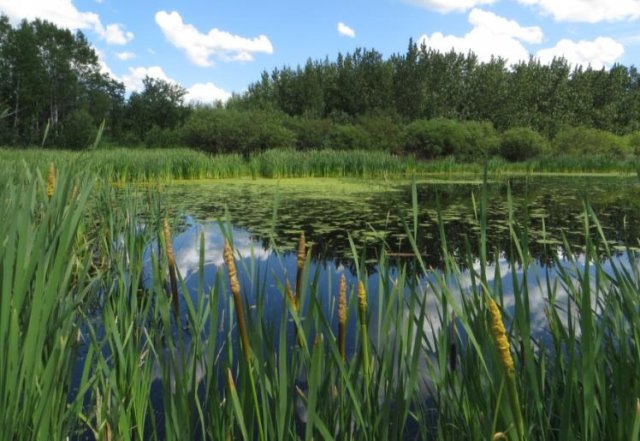Ohio Uses Wetlands Program Development Grants to Protect Wetlands
In the early 1990s the Ohio Environmental Protection Agency (OEPA) began developing Water Quality Standards for wetlands. In order to implement wetland water quality standards, the state needed to first develop a methodology for assessing wetland quality. To meet this need OEPA developed plant, amphibian and invertebrate Indices of Biological Integrity (IBIs) for wetlands. The OEPA used the IBI tools as a basis for developing a rapid biological assessment method for wetlands or, the Ohio Rapid Assessment Method, commonly known as ORAM. The wetland water quality standards require the use of ORAM score to determine wetland quality. OEPA has also used these tools to evaluate wetland mitigation projects, develop performance standards for wetland mitigation banks and In Lieu Fee programs and assess wetland condition at both a watershed and state level. EPA’s Wetland Program Development Grants (WPDG) supported the development of ORAM and IBI’s, thus contributing to wetland protection in Ohio.
ORAM combines metrics of wetland habitat, hydrology and surrounding land use into a single score of Wetland Quality. The scores are then used to categorize the wetlands; there are three different categories of wetland quality. The vast majority of wetlands in Ohio are considered in medium or “good” condition and are Category 2. This category also encompasses degraded but potentially restorable wetlands. Some wetlands are Category 1, meaning their waters are of limited quality. They are significantly degraded, limiting their functions and values. The antidegradation rule has set a lower bar for impacting these wetlands, limiting the social and economic justification needed for permitting. Lastly, the Category 3 wetlands are “superior.” Impacting Category 3 areas is prohibited unless the proposed action can clearly be demonstrated as necessary to meet a public need.
ORAM results must be submitted with all applications for a permit to fill wetlands and OEPA requires developers to first consider how they can avoid or minimize their impacts on a wetland and to also justify the project’s actual social or economic benefits to the community. The use of ORAM in OEPA’s implementation of its isolated wetland permitting and Clean Water Act section 401 certification programs has strengthened the basis for the regulatory decisions made by the agency and provided the foundation for the development of wetland mitigation performance standards in Ohio. OEPA’s 3- tier approach to wetland condition assessment has been adopted and modified by several other states, including Kentucky, for use in their wetland regulatory and wetland condition assessment programs.
*The method for rapid assessment of wetlands in Ohio could not have been developed without the assistance of Ohio EPA's 401/Wetland Ecology Unit including Laura Fay, Tom Harcarik, Amy Holtshouse, Linda Merchant, Dan Osterfeld, Ric Queen, Michael Smith, and Holly Tucker, and the past and present members of the Ohio Rapid Assessment Method Workgroup.*
Read more about what Ohio is doing to protect wetlands.

